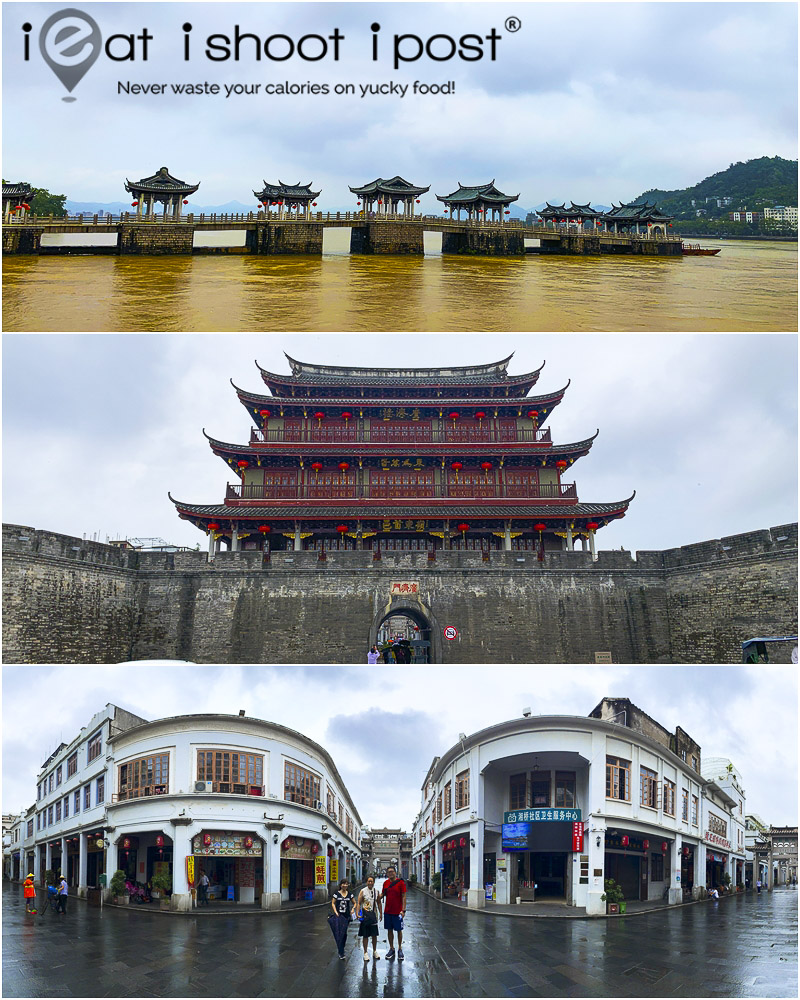
Our trip to Chaoshan was inspired by the Netflix series, “Flavourful Origins”. Although, I have always toyed with the idea of visiting my ancestral homeland for a while now, I needed that extra push to make it a reality. Well, the splendid documentary on Chaoshan food was that proverbial straw that broke the camel’s back! So, we headed off to the land of the Teochews to look for olives, aged chai poh, beef hotpot, beef balls, marinated crab etc etc.
We travelled to Chaoshan via high speed rail after a 2 day stay in Hong Kong to indulge in our favourite eats. The high speed rail had only just started its services so the facilities and the trains were still spanking new. The whole journey took us about 3 hours and was very comfortable.
Here are a few things to note when planning a trip to Chaoshan. Your google maps, facebook, instagram and whatsapp will cease to work once you cross the border into China and even a locally bought sim card will not allow you to access your whatsapp, even if you use a VPN (We tried). The way I managed to get my apps to to use my roaming package from Singtel and subscribe to ExpressVPN. Our credit cards did not work in Chaoshan, but fortunately you can still draw cash the ATM machines.
To get around, we hired a car with a driver. Here is the contact for our driver: Su-Ming +86 13421066770. Wechat su-ming520. He doesn’t speak English, so you will need to converse with him in Mandarin or Teochew.
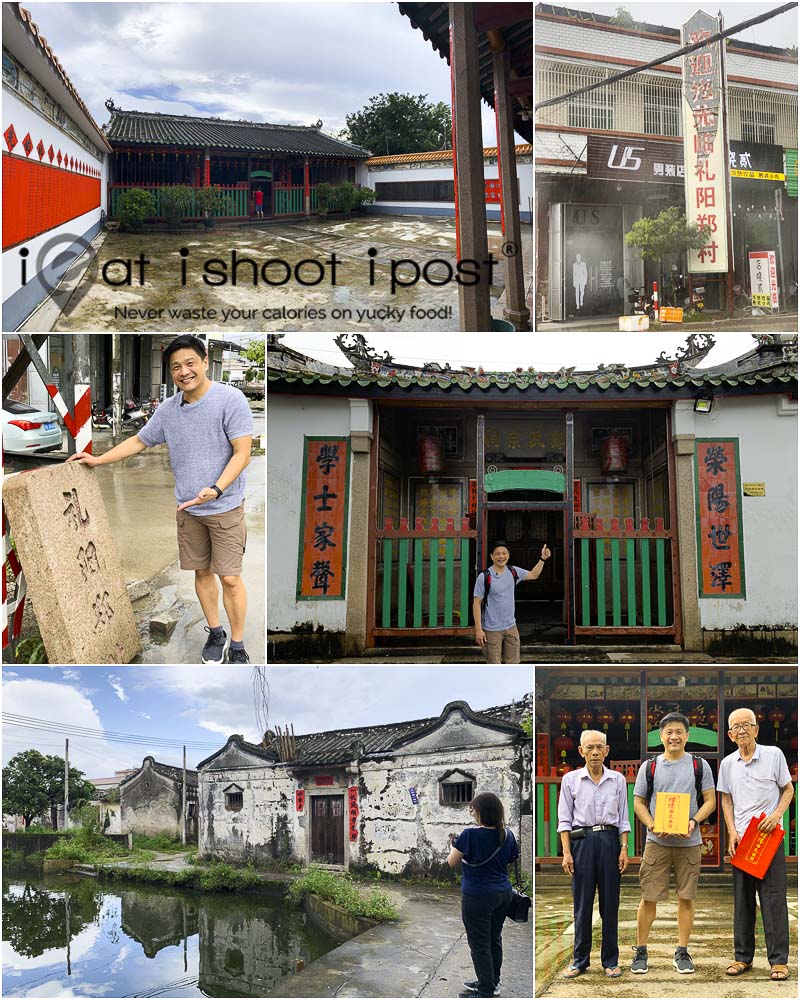
I hadn’t planned on searching for my ancestral village while in Chaozhou because all my dad told me about my grandfather’s village were four words –“Teo Ang, Li Nyeh”. I had no idea what those words meant except that it had something to do with the village where my grandfather came from.
When we arrived at the train station, the first thing our guide asked me was whether I knew where my ancestral village was. I related to him the four words and miraculously he said that the village was just 20 mins away from where we were!
Visiting my ancestral village was a surreal experience. I tried to imagine Ah Gong climbing the trees and playing around the pond as a kid before deciding to journey to Malaya as a teenager to eke out a living. He probably never imagined it to be a one way trip and that it will be almost a century before his grandson would return to the village!
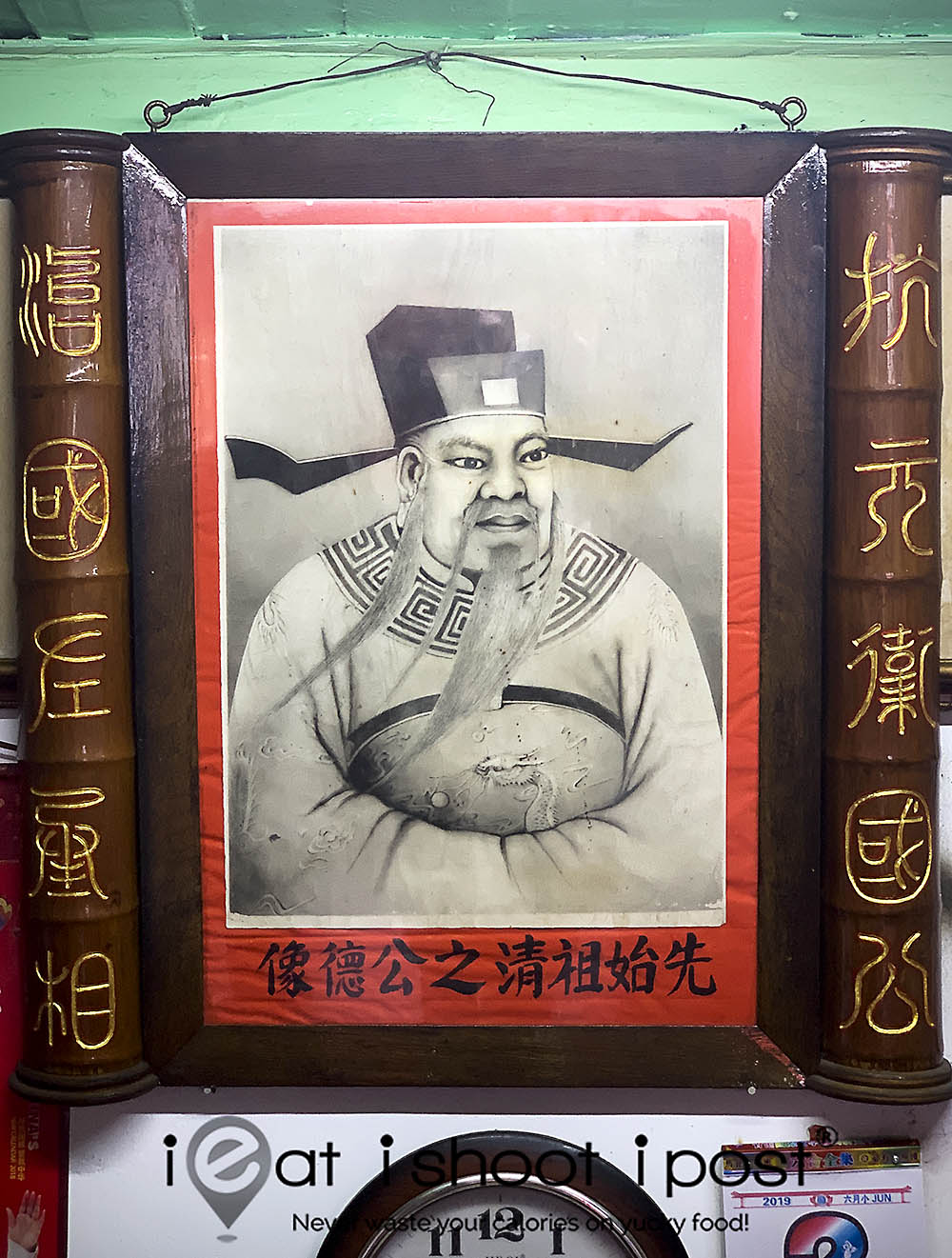
I never realised that the villages were organized according to surnames! So our village, 礼阳郑村 was where all the inhabitants had the surname, 郑 (Tay). Just next to our village was 礼阳李村 where all the 李 in the area lived!
The most important building in the village is the ancestral temple which has a history stretching back to the 13th century when the very first Tay founded the village. Here is where you can trace your family tree! I didn’t managed to find my grandfather’s name, but was given a book that I can look through, so hopefully, I might work out my family tree one day.
So, this entry is dedicated to all my fellow 礼阳郑’s out there! Kah gi nang, kah gi nang!
Li Yang Zheng Chun
Chao’an, Chaozhou, Guangdong
MAP

Teochew beef hotpot is really popular in Chaoshan! You can find many restaurants especially near the abbatoirs. You might have heard that Teochews are sticklers for freshness. Well, I thought at first it referred mainly to seafood, but as I have found out during my trip, it refers to everything, including beef and pork!
These beef hotpot restaurants are usually located near the abbatoir as the beef is typically served on the day it is slaughtered. No such thing as aging here. It’s got to be fresh! The other interesting thing about beef hotpot is that the most popular cuts of beef are the ones that are usually considered secondary cuts in Western cooking. The most prized cut in beef hotpot comes from the “neck” or the hump and they also like one particular part of the shin as well as the fat of the brisket. The meat is simply cooked in a clear soup and dipped into “sar char” sauce which is their version of satay sauce. Beef balls are also very popular in Chaoshan and you will be able to order these at the typical beef hotpot restaurant.
This particular restaurant is just a short drive from the train station and was our first food stop. It is one of the more well known beef hotpot restaurants in Chaozhou city that was recommended by our local guide. 4.25/5
Hai Kee Beef Hotpot
MAP
You may be interested in ChaoNiu Beef Hot Pot in Singapore
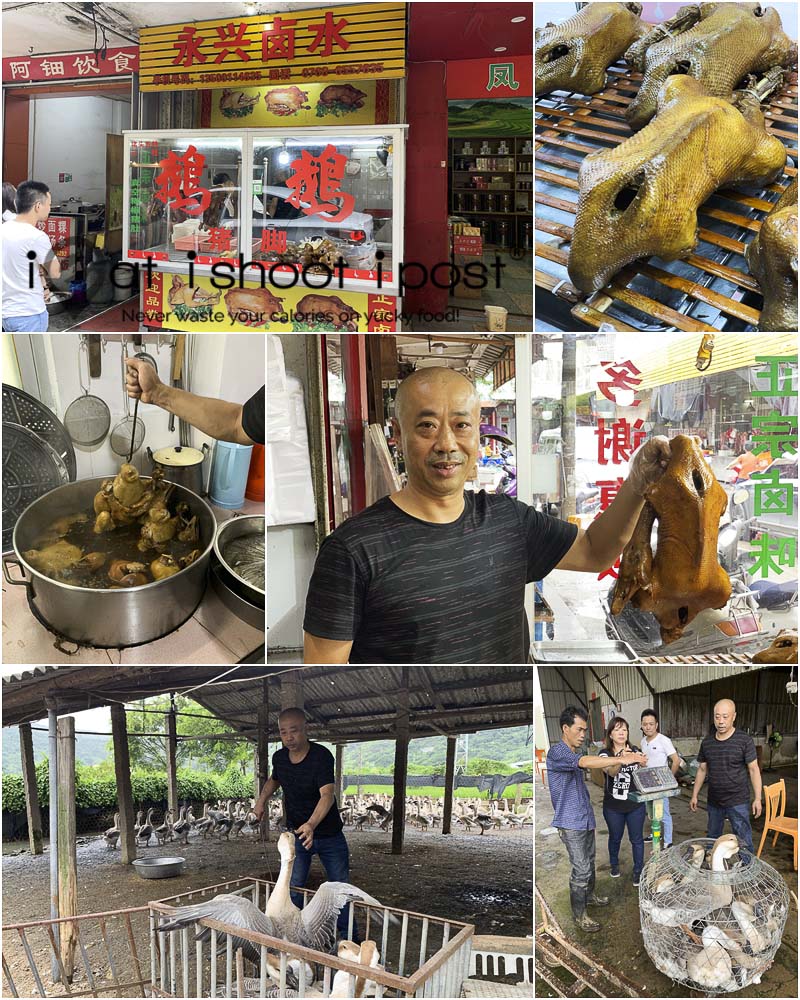
You can’t visit Chaoshan without tasting Teochew braised goose which is one of the most iconic of Chaoshan dishes. The thing with braised goose is that they don’t really have restaurants that you can go to just to eat it. Instead, most locals simply buy it from the shop and have it at home.
Yong Xing Braised Goose is just such a stall that is located at the wet market. The owner was kind enough to bring us to the local goose farm where he went to pick the geese for the next day. According to him, the key to a good braised goose lies in his ability to pick the right goose! When I asked what he was looking for, he simply smiled and told me that it is not something so that can be taught in five minutes but takes years of experience in order to master the art. However, he did say it has something to do with how the way the goose swaggers and hold himself in the crowd!
The braised goose at Yong Xing is very good. It is tender and moist and the sauce is tasty. I must admit that it wasn’t a moment of epiphany as I had expected it to be but it is definitely one level up from our local braised duck. 4.25/5
Yong Xing Braised Goose
MAP
Location of Goose Farm
MAP
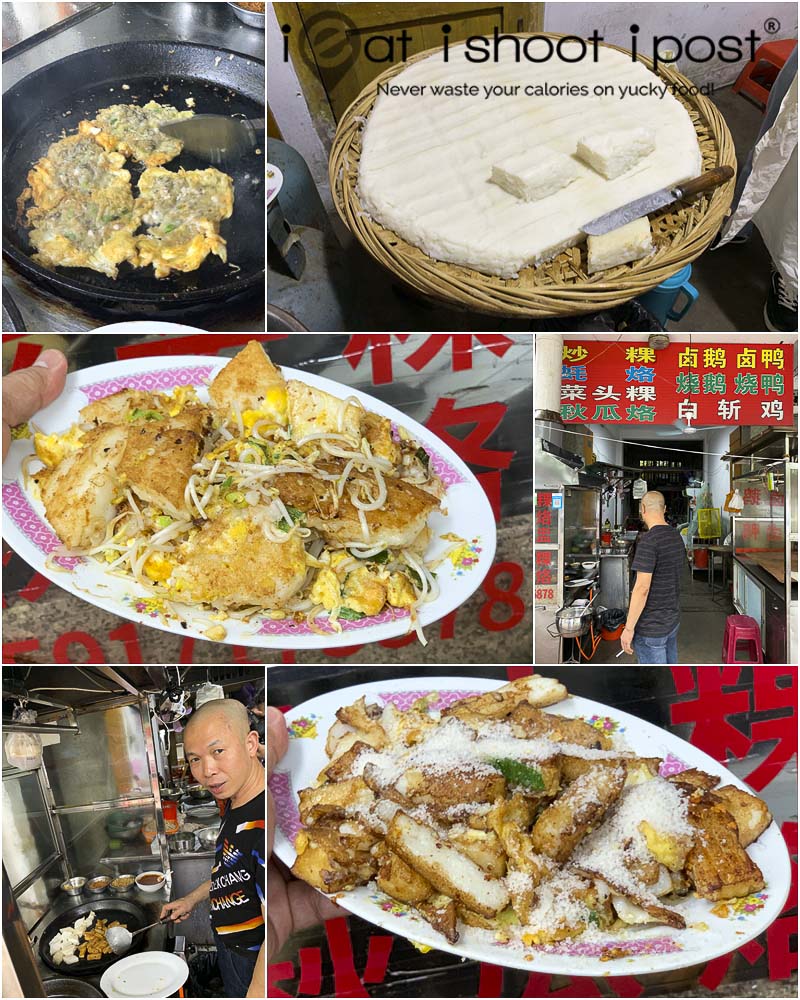
Just round the corner from Yong Xing Braised Goose is a place that sells very nice carrot cake and oyster omelette. We especially like the char kuay which is plain rice cakes fried with eggs and served with a sesame flavoured sugar. The amount of sugar may look a little scary but it is actually not as sweet as normal white sugar. Their carrot cake is fried almost like ours except that bean sprouts are added. 4.25/5
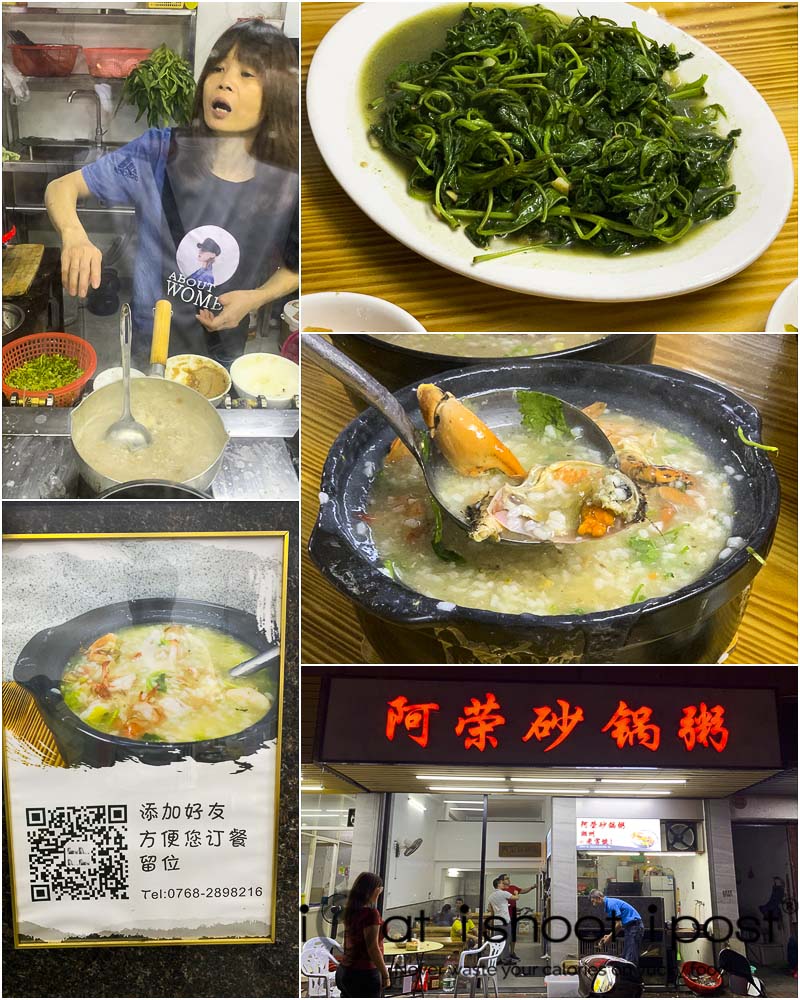
We had one of our best meals at this Claypot Porridge place which was just round the corner from Chaozhou Hotel where we stayed. It is the perfect spot for supper! The crab porridge here is highly recommended. They cook the porridge from raw rice and the crabs are added later in the cooking process. They also have live pigeons and frogs which are despatched on the spot when you order. I wasn’t too keen on the pigeon, but the crab porridge was really good! 4.5/5
Ah Yong Claypot Porridge
MAP
Opens in the evening to well past midnight
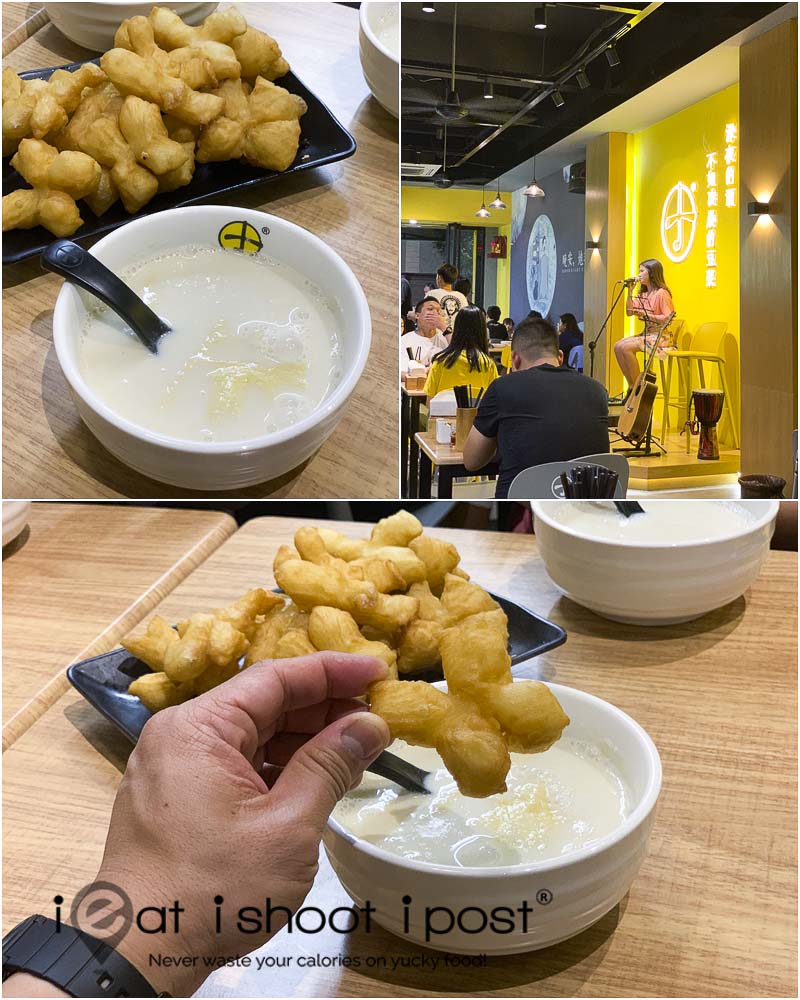
Another great supper place near Chaozhou Hotel is this hip restaurant selling hot soy milk. The soy milk is thick and rich and fills you belly with something warm and comforting, the supper to lull you to sleep! 4.25/5
Xiao Tian Soy Milk
MAP

We didn’t get to try handmade beef balls this trip, but we did try this hole-in-the-wall place that sells freshly made pork balls. They purchase freshly slaughtered pork in the wee hours of the morning to make the pork balls which are superb! The texture is just perfect and I have been thinking of these ever since I returned to Singapore! Must try! 4.5/5
Ba Jiao Lou Pork Balls
MAP
Open for early breakfast and sold out by 9am
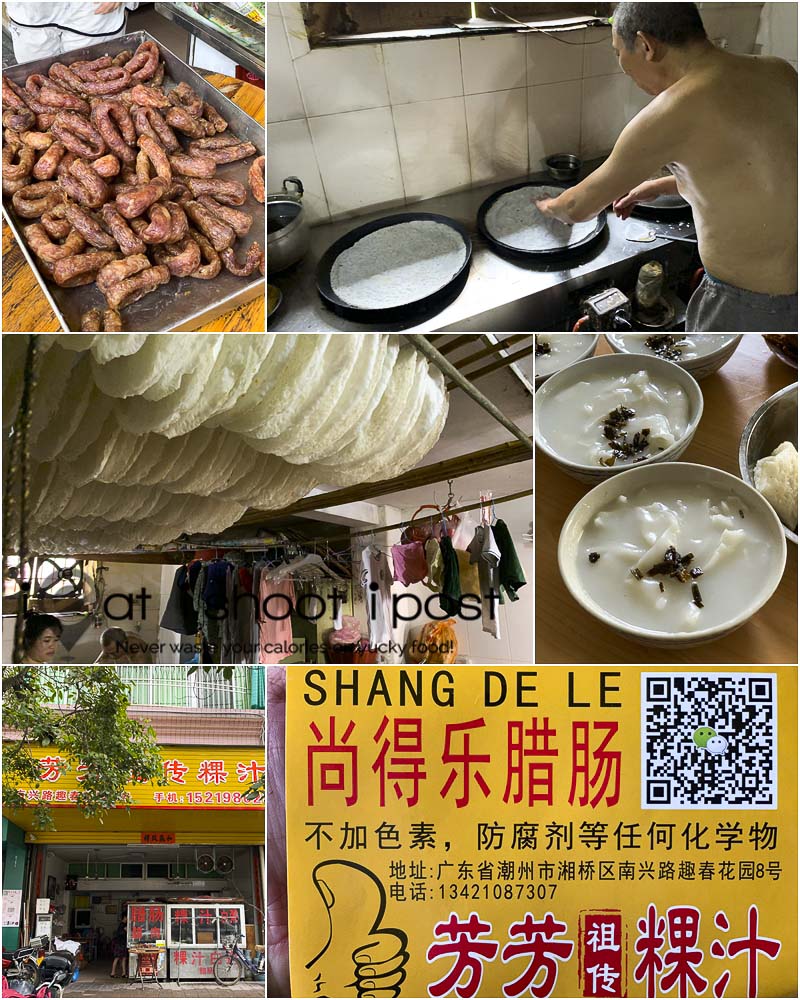
One of my goals for visiting Chaoshan is to gain insight into how our Singaporean Teochew dishes have evolved from its place of origin. One of the dishes that showcases this the best is kway chap.
Fang Fang prides itself for serving traditional handmade kway which is pan toasted over a cast iron skillet and hung on bamboo poles to dry. They don’t do this in Singapore anymore. In fact, our kway is just uncut kway teow which is steamed. Having said that, I found the traditional kway to be rather starchy and thick and I actually still prefer our local version! The handmade sausages here are really good. They are made fresh daily without the use of any preservatives or coloring! This is definitely one place to put on the itenerary. The lady is very friendly and will tell you about the how Kym Ng came to film at her stall many years ago for an episode of food origins! 4/5
Fang Fang Kway Chap
MAP
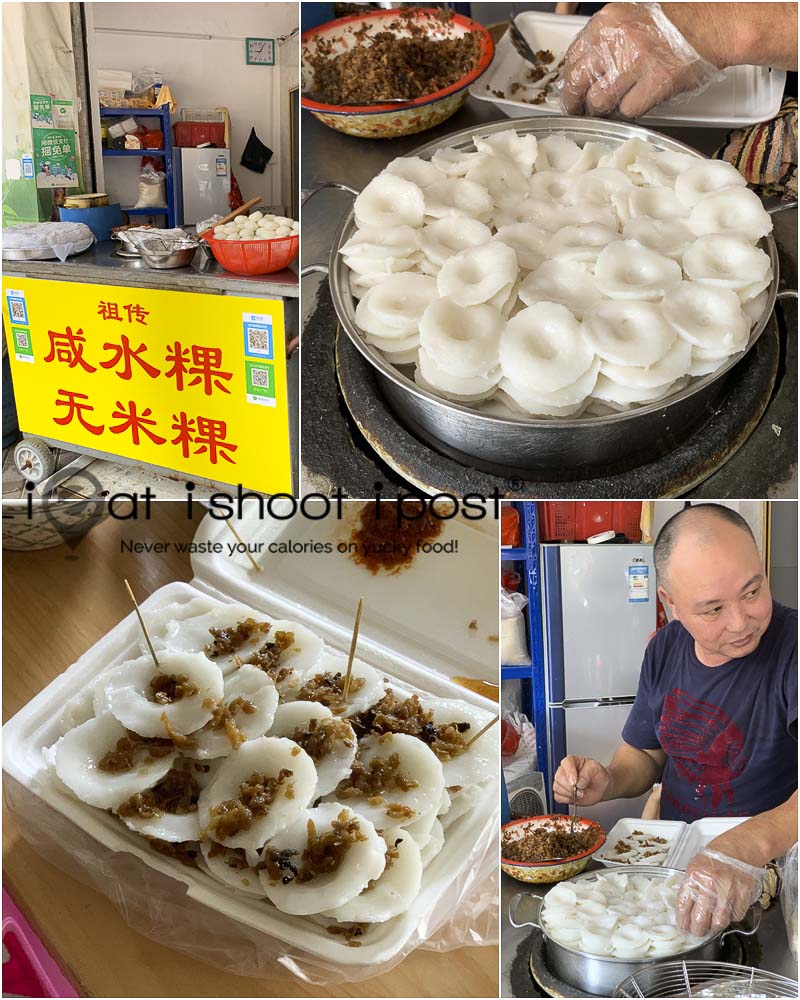
Just opposite Fang Fang kway chap is this stall that sells chwee kueh. It isn’t particularly famous, we just chanced upon it on route to the kway chap. It is interesting to observe the difference between the chwee kueh in Chaoshan and Singapore. Theirs is significantly smaller, small enough for a single bite and the texture is more chewy as it is made from milled rice. The chye poh is less sweet than our version here. Personally, I still prefer what I grew up with! 3.5/5
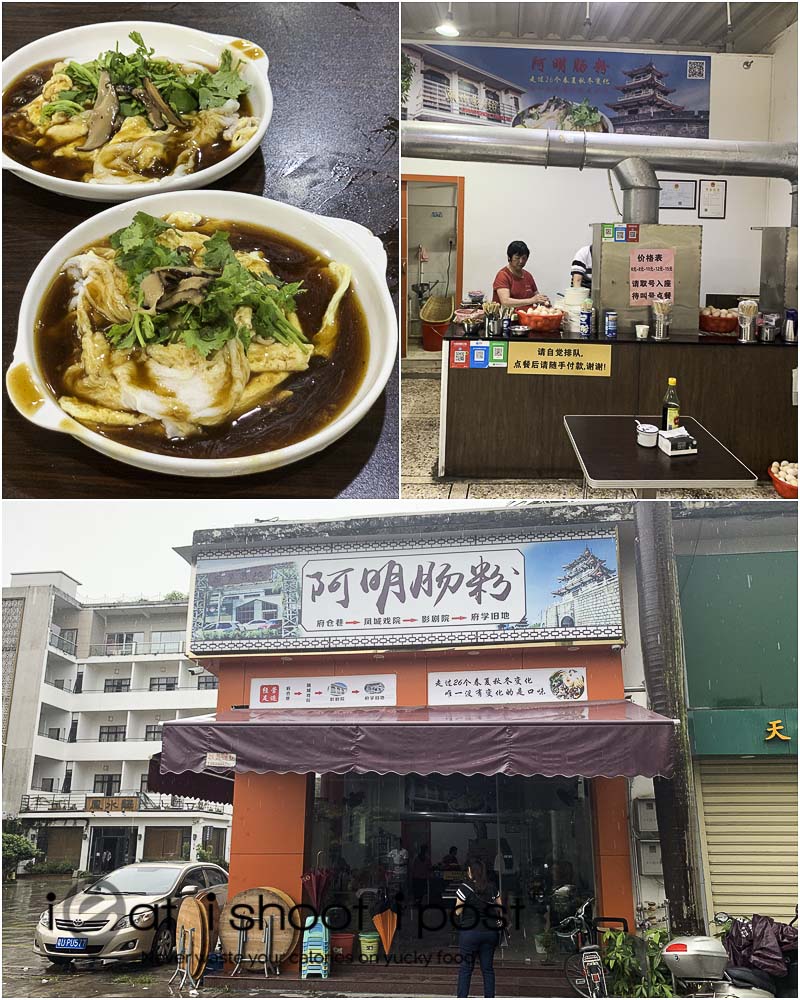
A breakfast favourite in Chaoshan is chang fen which is a little different from the ones we have here in Singapore. The rice batter is steamed together with an egg and the gravy is savoury and salty instead of sweet. I wasn’t particularly bowled over by it, but this place is very popular amongst the locals. 4/5
Ah Ming Chang Fen
No.23 Shangshuimen Street, Xiangqiao Qu, Chaozhou Shi, Guangdong Sheng, China
MAP
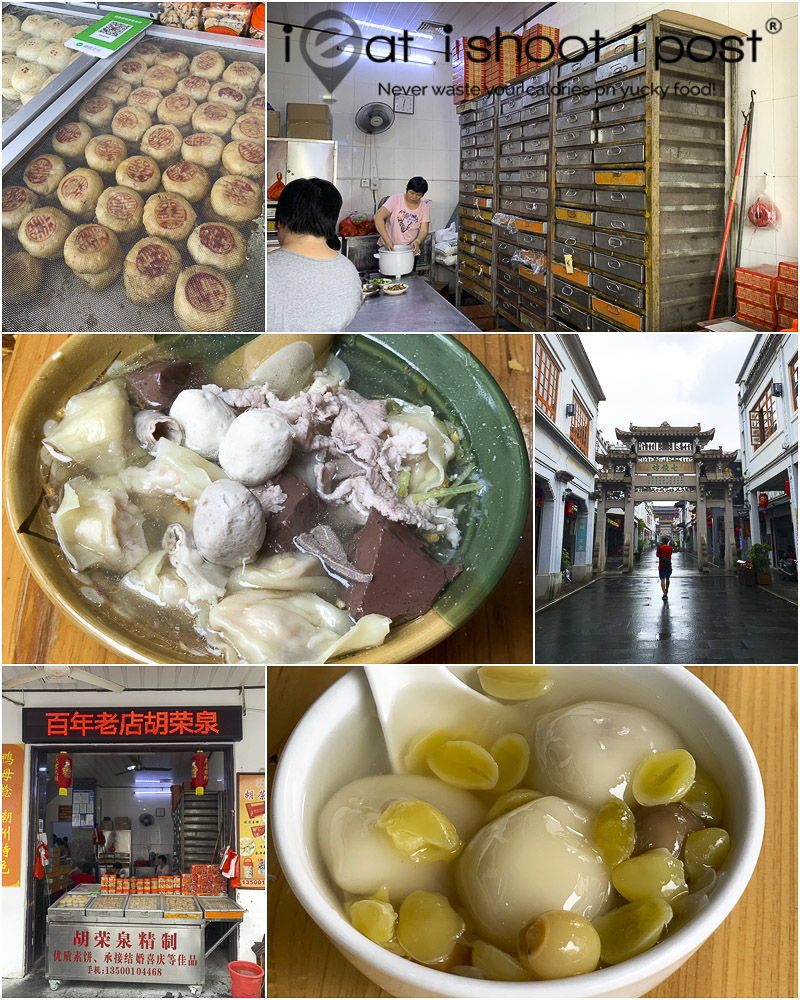
Over at Chaoshan old city, there is a century old shop which specializes in Teochew biscuits and snacks. They are also the ones who purportedly invented glutinous rice balls (Arh Bo Leng)! You can also find fried popiah that is stuffed with mung beans which are delicious! Definitely worth a visit when visiting the old city as most of the other shops are quite touristy, but this one is the real thing! 4/5
Wu Rong Chuan Century Old Shop
MAP
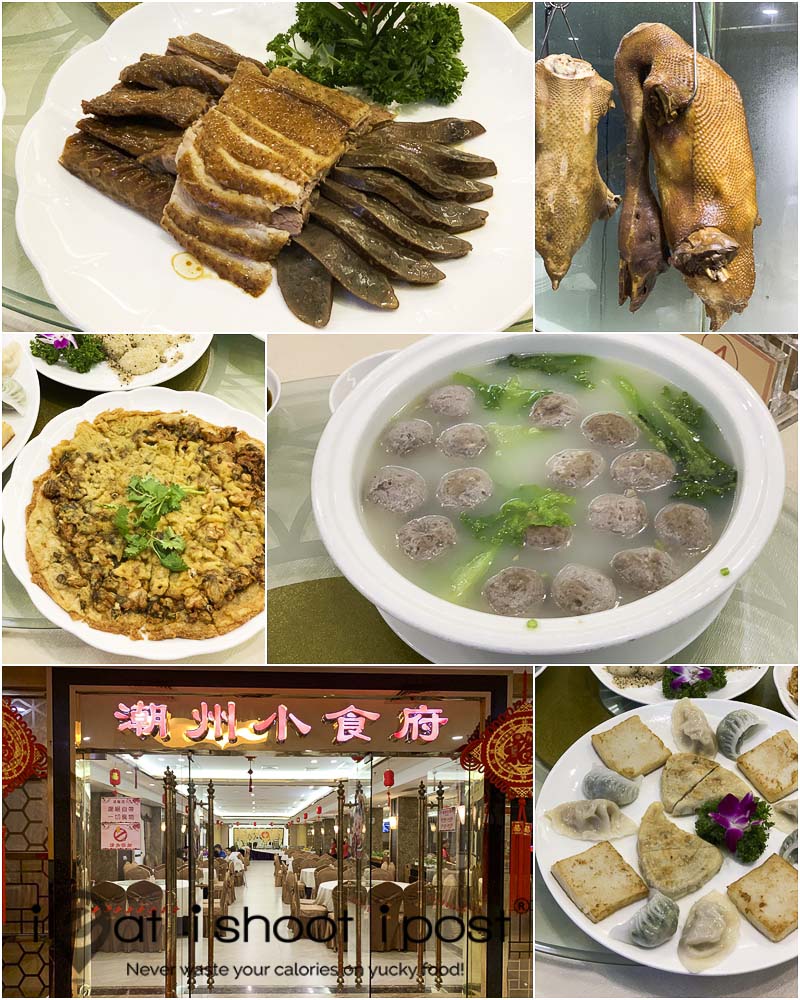
If, you are worried about eating street food, there is a restaurant at Chaozhou Hotel where we stayed where you can find most of the popular Teochew classics. They might not be a great as those that you find on the streets, but it is a convenient place where you can sample the popular Teochew dishes like braised goose, oyster omelette, beef balls etc. 3.5/5
Chaozhou Hotel 潮州宾馆
MAP
Shantou
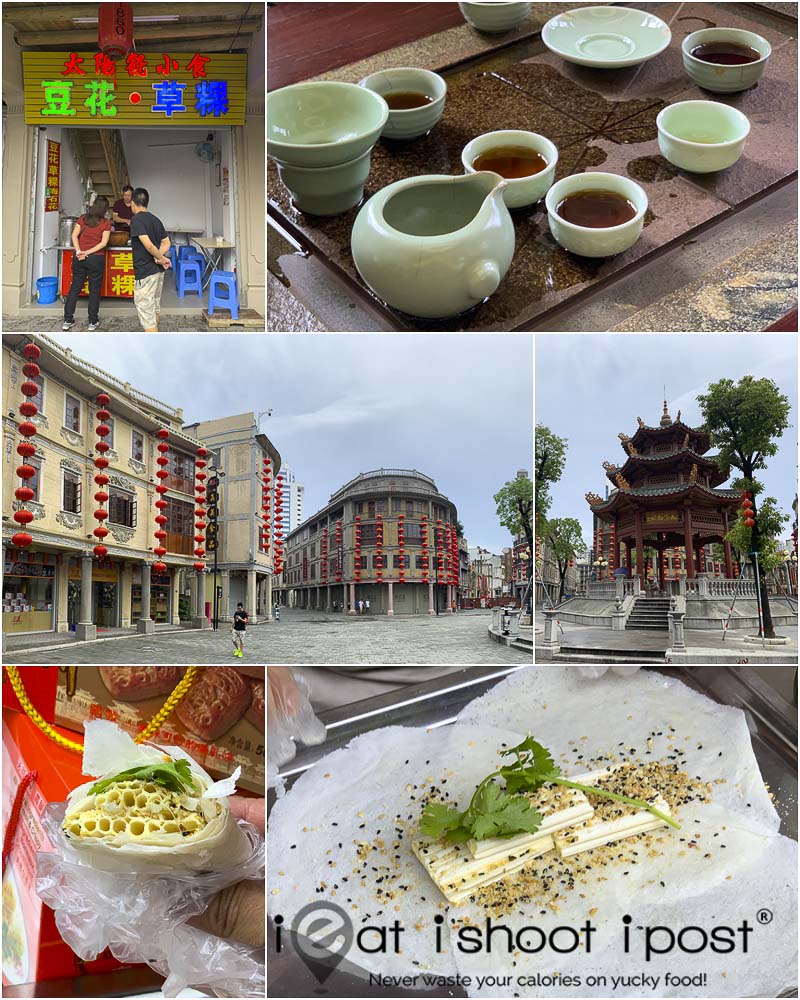
Chaozhou, Jieyang and Shantou are the three major cities that make up the Chaoshan region. Most of our Teochew forefathers would have travelled to Shantou to board the junk to sail to Nanyang in the old days. As such, Shantou is the most developed city and was where the airport used to be until it was relocated to Jieyang in recent years. It can be quite confusing at first because most Singaporeans refer to Shantou or Swatow as if it is Chaozhou (Teochew). Over in the Chaoshan region, they make a distinction between the Shantou people, who are known as Swatow nang and the people from Chaozhou city, who are the Teochew nang! So, the term Teochew nang can refer to the inhabitants of Chaozhou city specifically but also refers to the people living in the other major cities in the region of Chaoshan!
We took a day trip from Chaozhou city to Shantou which is which is about 1.5 hours by car. The old city is currently undergoing a facelift and all the stalls should be fully opened by the end of the year. Currently it is still pretty quiet, but it is still worth a visit. We found some local honeycomb sugar snacks as well as a bean curd stallswhere have been there for many years, but have just moved back into new premises.
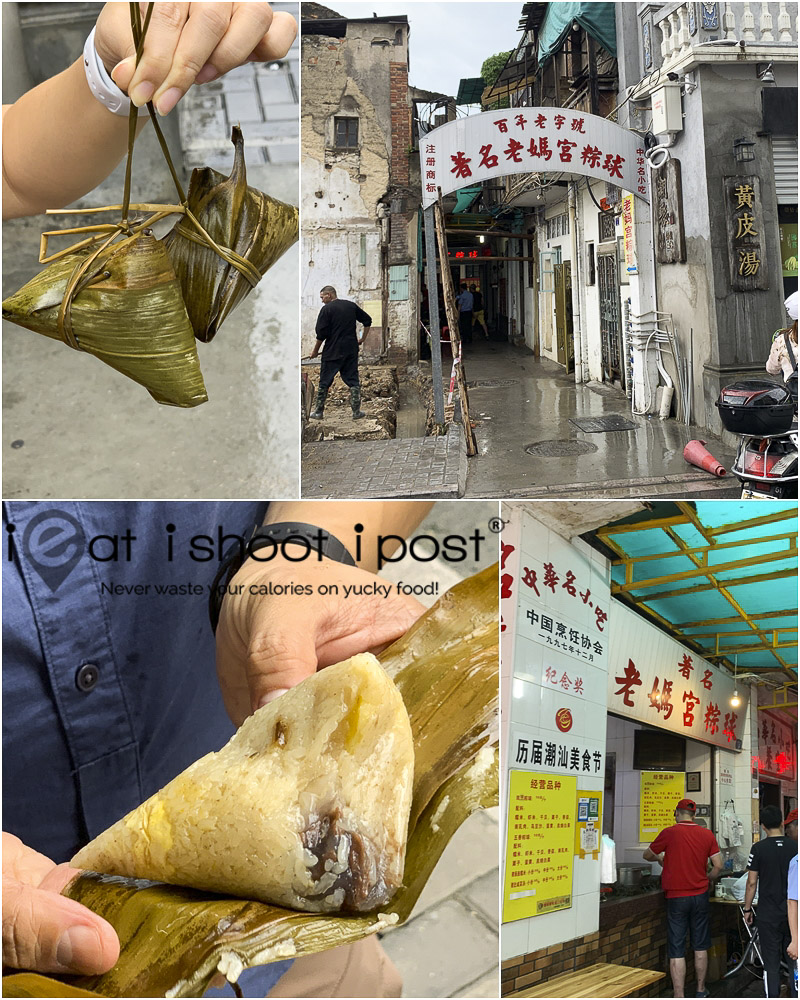
Over at the entrance to the old city is a very popular dumpling place where you can find the classic Teochew dumpling which has sweet red bean paste as well as meat. (潮汕双拼肉粽) It is very popular and there is a perpetual queue. I was very good, but again, not a life changing experience. 4/5
Lao Mah Rice Dumplings
MAP

The one restaurant that really impressed us was this place that serves Teochew Porridge. The spread of available dishes is simply encyclopaedic. Here is where you can find the famous Teochew raw marinated crabs as well as other classics like braised goose, goose blood, intestines, chye poh omelette and trays after trays of freshly steamed fish. If you are a foodie, this is foodie Disneyland! 4.5/5
Fu Yuan Teochew Porridge
MAP
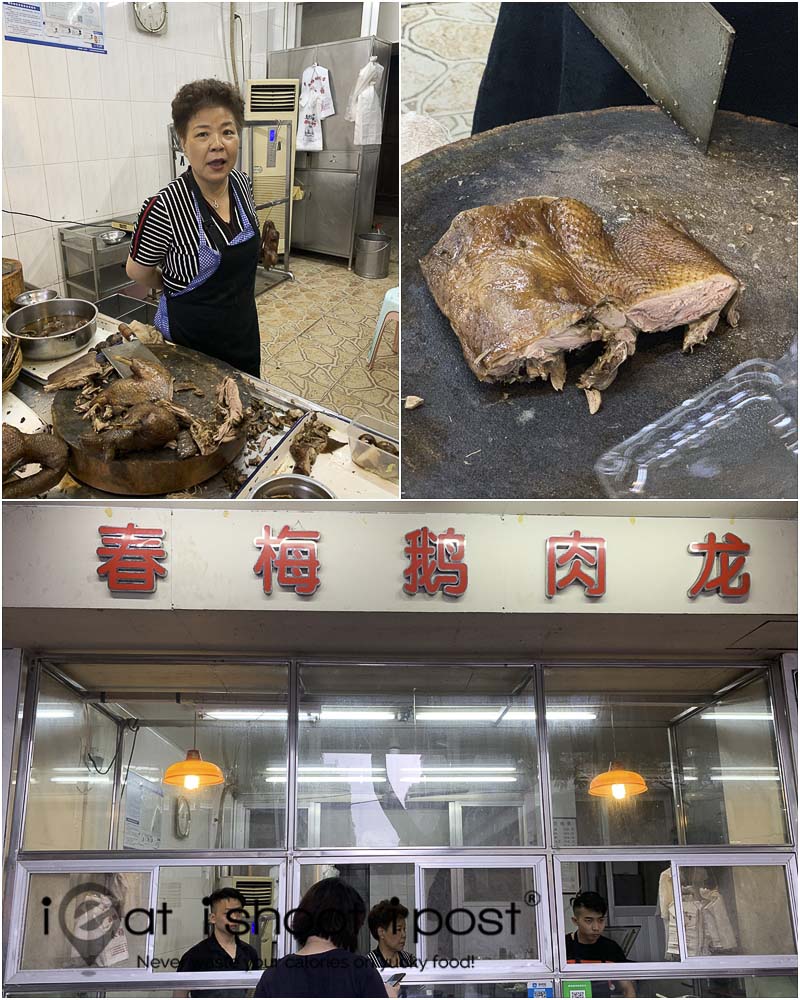
We headed to Chun Mei Meat store because according to some article on the internet, they sell the coveted braised “lion head” goose. We were disappointed to find that they were simply a normal braised goose stall, albeit a popular one. The goose is not bad and there is a stall next to it that you can find a wide array of Teochew snacks and kuehs. 4/5
Chun Mei Meat Store
MAP
Conclusion
This trip was more of a familiarisation trip and we didn’t really get to visit all the most famous eateries in Chaozhou and Shantou. But, it was good to be able to visit my ancestral village! If you are Teochew, you would feel right at home. The people are friendly and laid back and we never felt like we were treated like tourists! Instead, it really felt like a homecoming, which really goes to show that the old Teochew adage that “Teochew nang, ka gi nang” (Teochew people, our own people) isn’t just empty rhetoric but is in fact, quite true!




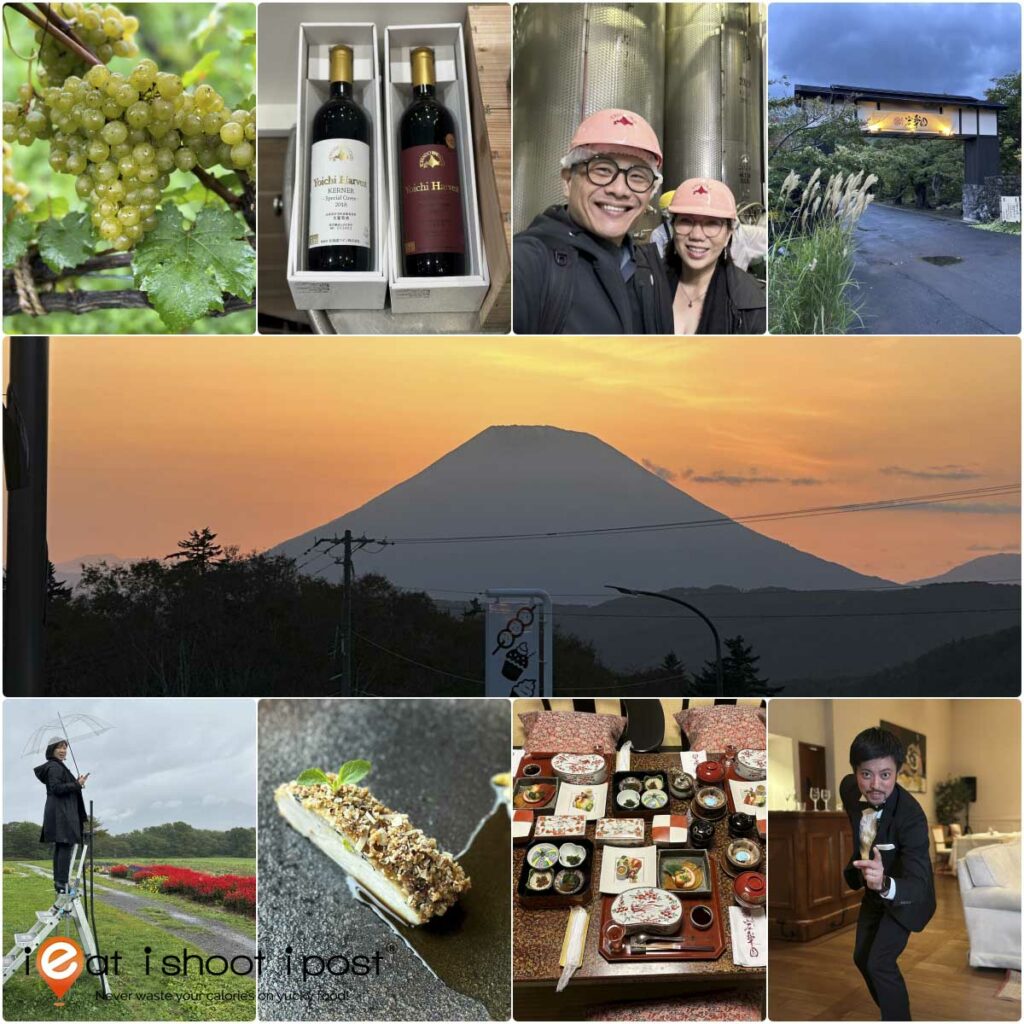
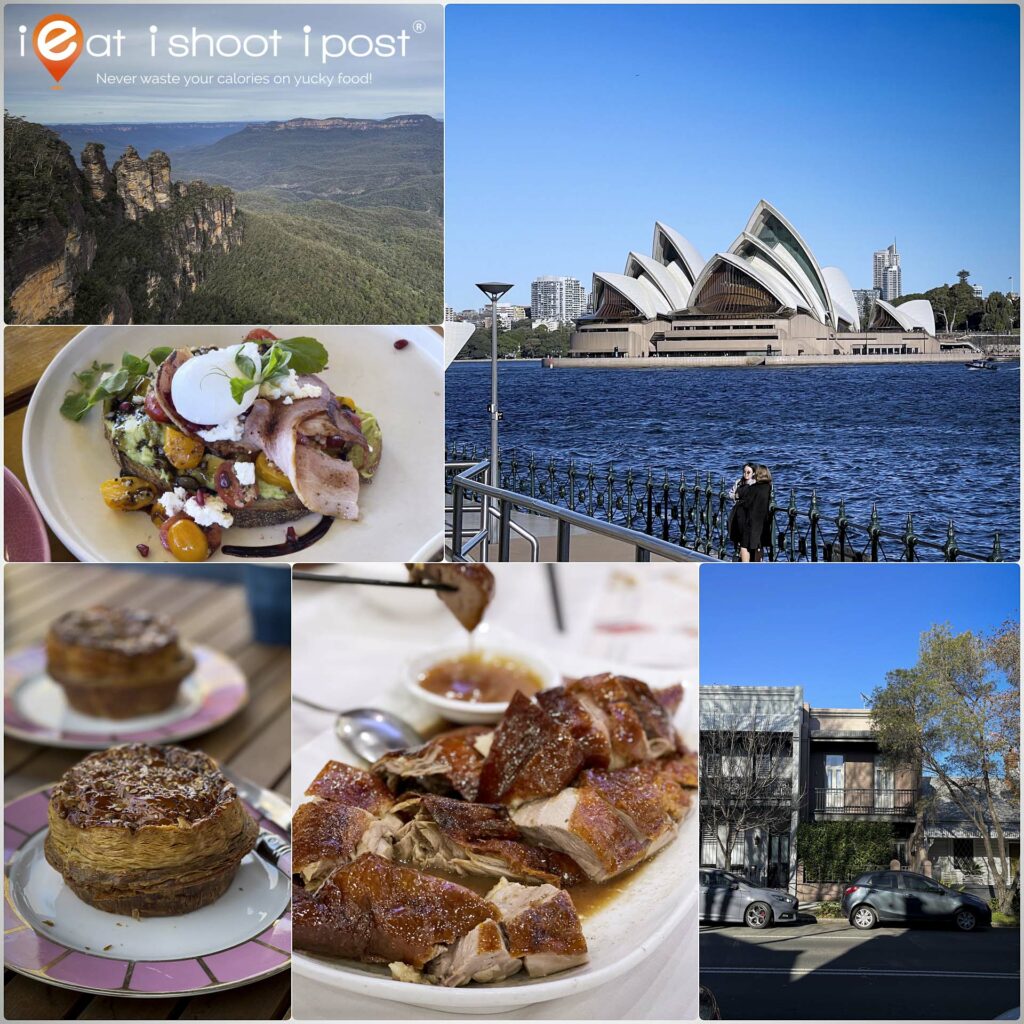

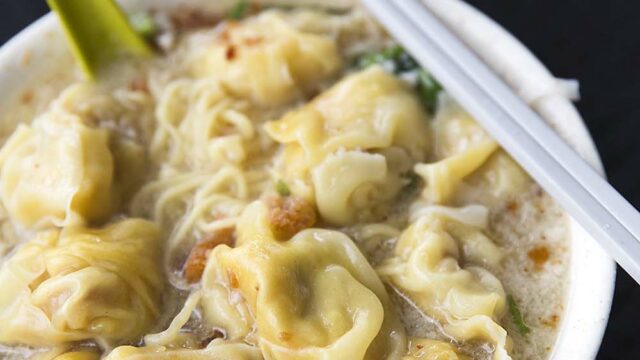
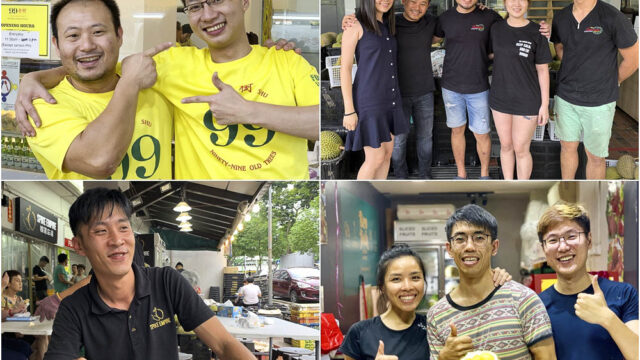



Looking through your photos at your ancestral village, I was surprised as I came from the same place. My father was born there. I was last there in Dec 2019. Maybe we are related!
Ga gi nang!
Can I check – did all the restaurants survive the COVID shutdown ?
We’re not really sure frankly. Certainly hope so.
Might I know how much you paid for the guide and what did he include?
Our “guide” was our friend’s acquaintance and is not a travel guide unfortunately.